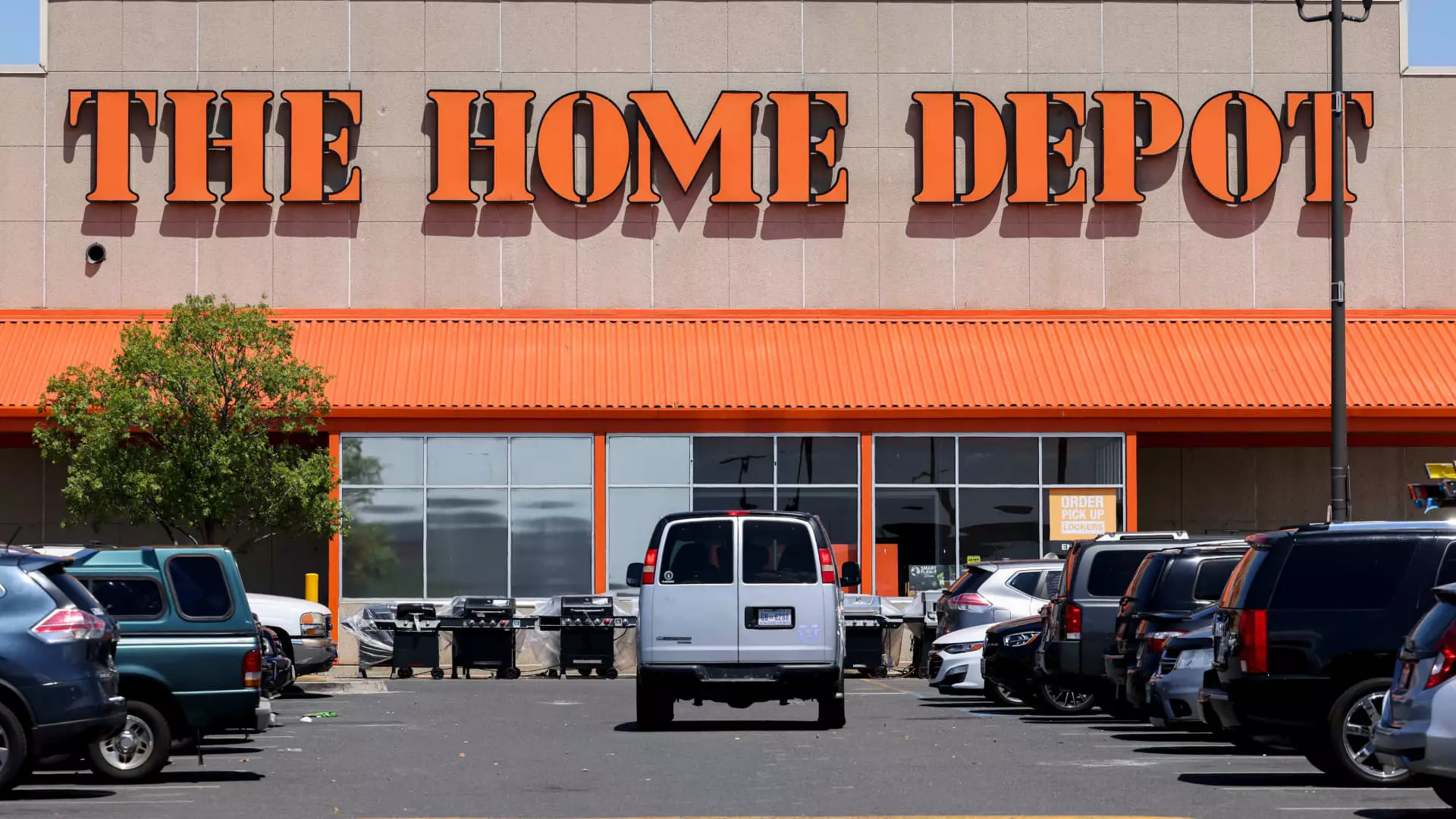As we navigate the unpredictable waters of the economic landscape, assessing investment opportunities in blue-chip stocks becomes paramount. Recently, we initiated our investment in Home Depot, targeting its potential gains amid fluctuating housing markets and interest rates. With shares purchased at around $362, our strategy involved positioning ourselves even more advantageously by acquiring additional shares a few days later, albeit at a marginally higher price. As the dynamics of the stock market shift, Home Depot presents an intriguing case study worth examining.
Performance Analysis and Market Context
Home Depot’s stock performance has been a mixed bag over the year, currently showing a modest increase of about 7%. In comparison, the S&P 500 index has surged over 16%, indicating that Home Depot has fared below the broader market. Notably, the stock experienced a substantial rally to $395 in March, fueled by optimistic expectations of multiple Federal Reserve rate cuts. However, as those expectations recalibrated, the stock plummeted to around $325 in May. Such volatility reflects not only the sensitivity of Home Depot’s valuation to macroeconomic indicators but also the broader apprehensions related to housing turnover in a high-interest rate environment.
The steep fall following the high reflects a critical aspect of our investment consideration: Home Depot stock has yet to recover its previous all-time high of $415 reached during the pandemic, when home improvement projects surged due to burgeoning remote work trends. This clear delineation of price points underscores the potential gap between current market conditions and the optimistic projections held during the pandemic’s peak.
Our investment thesis hinges on the revival of housing turnover, which serves as the lifeblood for Home Depot’s sales. Historical data suggests that substantial housing market activity generally kicks in when mortgage rates hover between 5% and 6.5%. Recent trends indicate that as mortgage rates dipped below the 6.5% threshold, the market reacted positively. Home Depot’s CEO, Ted Decker, commented on this correlation, highlighting that declines in mortgage rates lead directly to increased activity in housing transactions and refinancing applications.
This recent fall in mortgage rates to 6.29%—down from 6.43%—is a promising signal, albeit still within the higher range that constrains buyer activity. Yet, any further declines, particularly dipping below the 6% mark, could catalyze an explosive recovery in home transactions, presenting a ripe opportunity for Home Depot as consumers flock back to the market. Notably, this sentiment is echoed by industry leaders, with Toll Brothers’ CEO suggesting that mortgage rates could soon trend towards the coveted 5% range, igniting a recovery in housing dynamics.
It is crucial to understand that while lower mortgage rates signal potential growth, the upswing for Home Depot will not be instantaneous. The effects of mortgage rate changes play out over time as buyers adjust their purchasing behaviors and project scopes. Notably, Decker illustrated an increment in home equity, amounting to nearly $18 trillion since late 2019, emphasizing the strong foundation Home Depot stands upon. Increased home equity generally correlates with heightened home improvement activities, indicating a potential path back to sales growth for the company.
However, it is essential to exercise pragmatism; currently, Home Depot is still grappling with comparable sales declines, and industry analysts do not foresee a return to growth until mid-next year. This prolonged downturn reinforces the significance of strategic foresight—investing now could enable us to capitalize on the forthcoming recovery.
Competitive Positioning and Strategic Initiatives
When considering competitive positioning in the home improvement space, we find Home Depot and Lowe’s offering distinctive value propositions. While both retailers stand to benefit from the trends outlined, Home Depot’s strategic focus on professional clients strengthens its competitive edge. The recent acquisition of SRS Distribution, bolstering its position in the professional segment, expands its potential market considerably. This shift highlights Home Depot’s commitment to enhancing its appeal to contractor-focused customers, showcasing an ability to pivot according to changing market demands.
Furthermore, Home Depot’s consistent dividend yield of approximately 2.4% serves as a safety net during market fluctuations, appealing to income-focused investors as they await a recovery in housing activity. While stock buybacks are currently paused, the foundation for sustainable growth remains intact.
As we hold firmly onto our Home Depot investment, we recognize the changing tides of interest rates and their impact on housing turnover. By seizing this moment and positioning ourselves strategically, we aim to navigate the complexities of the current economic climate, all while being prepared for the eventual rebound in the housing market. Investing in Home Depot aligns not just with a buy-and-hold mentality, but embodies a thoughtful approach to the anticipated reassessment of consumer behaviors in the wake of fluctuating mortgage rates.

